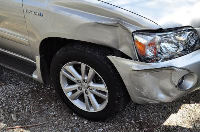April is Stress Awareness Month!
 Everyone has to deal with stress occasionally. It is an unavoidable part of life. In small doses stress can act as a stimulant, encouraging hard work and completion of tasks. In large or constant doses, though, stress can be a very negative influence on your health.
Everyone has to deal with stress occasionally. It is an unavoidable part of life. In small doses stress can act as a stimulant, encouraging hard work and completion of tasks. In large or constant doses, though, stress can be a very negative influence on your health.
Stress can manifest itself for a number of different reasons. New responsibilities at work, moving to a new place, and changes in relationships are just some of the reasons that adults succumb to stress. Children can also suffer from anxiety when they change schools, get too little sleep, or have trouble with friends or classmates. No one is exempt from the dangers of stress.
People who suffer from high amounts of anxiety can suffer from symptoms that include:
- Headache
- Upset stomach
- Low energy levels
- Difficulty sleeping
- Changes in appetite
- Overwhelmed feeling
- Low self esteem
The items listed are just a small portion of the full list of the possible signs of stress. If you notice that you are suffering from these symptoms because of a high level of stress, talk to your doctor about what you can do to decrease your stress levels. Your doctor may suggest some stress relief methods and coping strategies. These typically come in two distinct families:
Relax your Mind
There are many ways that you can relax your mind. The key to helping relieve your stress is to find out what works best for you. Some people find relief in cathartic methods, such as talking to people about their stressors. The person you talk to can be almost anyone – a family member, a friend, a counselor or therapist, or a clergy member can all provide a listening ear.
If you need to express your feelings, but don’t feel comfortable divulging your feelings, you may find a journal can provide you with a sense of release as well.
You can also relax your mind with other activities, such as:
- Meditation
- Guided imagery
- Volunteering
- Creative outlets
- Hobbies
Try a few of these stress relief methods, and see which become part of your routine.
Relax Your Body
In addition to relaxing your mind, relaxing your body is an important part of stress relief. One of the most common means of body relaxation is regular exercise. In addition to making sure that you are in good physical condition, exercise can be a great way to release stress.
Other techniques that can help relax your body include:
- Breathing exercises
- Progressive muscle relaxation
- Everyday physical activities (housecleaning, yard work, etc.)
- Yoga, tai chi, or other mind and body exercises
In addition to these ways to de-stress, there are a few things that you can do now that will help you avoid some stressors all together. Make sure that you have healthy eating and sleeping habits, and try to find a healthy work/life balance. Get yourself organized, and make sure that you and your family are protected, even in your worst-case scenarios.
One of the best ways to make sure that you avoid stress later in life is with insurance policies! They can provide peace of mind that you just can’t find anywhere else, and they can help you protect every part of your life – your health, your home and car, your business, and much more!
If you want to learn more about how you can achieve serenity with insurance protection, call 877-550-0025 now. A Vargas and Vargas Insurance agent can help you through the process of protecting yourself and your family against the possible stresses of the future.


















